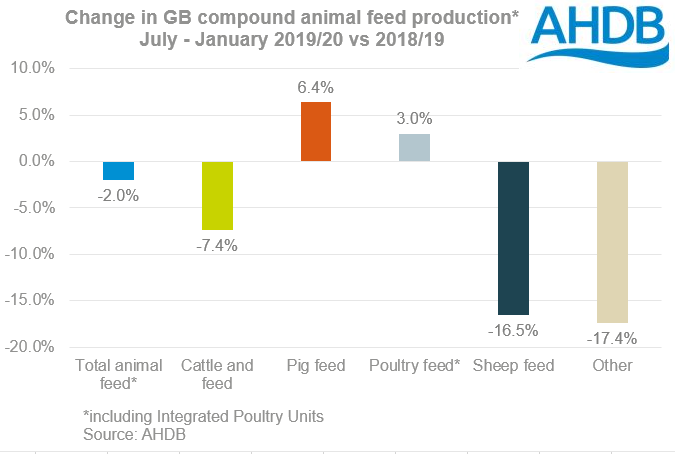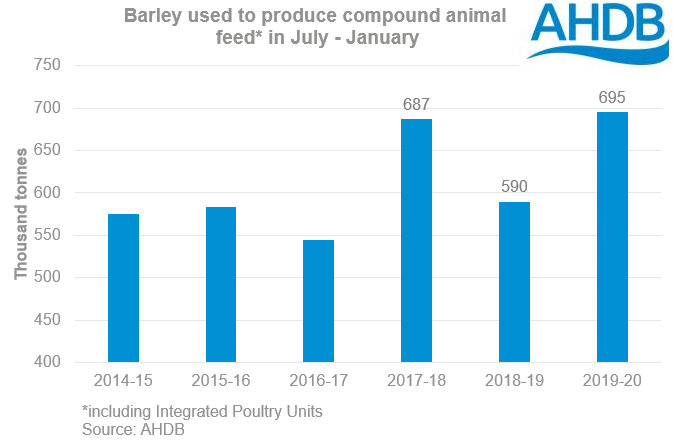Animal feed output down but is a shift ahead? Grain Market Daily
Friday, 6 March 2020
Market Commentary
- Old crop (May-20) UK feed wheat futures eased back slightly (-£0.25/t) yesterday to close at £150.50/t. Larger declines were recorded by new crop contracts with the Nov-20 contract down £1.00/t to £161.00/t.
- French spring barley planting is being delayed by wet weather with only 33% of the planned area planted by 2 March, just 1% more than the previous week (FranceAgriMer). This time last year 88% had been planted.
- Global oilseed prices have dropped following a fall in crude oil prices after Russia announced it was not willing to cut production beyond what was already planned. At midday today Brent crude oil futures are trading below $48 per barrel, down nearly 8% since Monday and the lowest since July 2017.
- May-20 Paris rapeseed futures fell by €25/t yesterday to close at €382.00/t and is trading around €4.75/t lower again at midday.

Animal feed output down but is a shift ahead?
GB compound feed production so far this season is down from 2018/19 due to reduced requirements by the cattle sector. In July through January (inclusive), the amount of compound animal feed produced, including by Integrated Poultry Units (IPU), was 2% lower than the same months in 2018/19.
The drop in demand from the cattle sector was potentially due to better forage availability and quality than the previous autumn. It was also partly offset by increased demand from the poultry and pig sectors.
The impact on the grain sector has been mitigated due to higher grain inclusion rates – find out more in the latest UK cereal supply and demand estimates. However, there is potential for more compound feed usage by ruminant sectors and so for grain demand to increase in the months ahead.
The wet autumn and winter has caused flooding in some areas and waterlogging in more fields, causing damage and restricting access. It could also delay the turnout of those cattle that winter indoors onto outdoor grazing. If turnout is delayed or grass growth is impaired, more compound feed may be needed to feed to those animals, but this will depend on:
- Availability and quality of forage supplies – 2019 was good on both fronts.
- Grass growth in 2020 – monitor rates via Forage for Knowledge
- Usage of grain on farm versus compound feed
- Profitability of the beef, sheep and dairy sectors
Barley usage climbs in compound feed
Barley used to produce compound animal feed is up markedly this season due to the high availability in 2019/20 and the grain’s price competitiveness against both wheat and maize.
From July to January (inclusive), 16% more barley was used to produce compound animal feed (including by IPUs) than the same months in 2018/19. This increase is at the expense of maize (down 22%), with wheat usage also up 1%.
The year on year increase in barley used in compound feed to date is larger than the increase forecast for barley as animal feed across the whole season (+14%). While the total barley figure includes direct on-farm usage, a larger amount of barley used in animal feed could reduce the amount the UK needs to export to reduce carry out stocks.
Sign up for regular updates
You can subscribe to receive Grain Market Daily straight to your inbox. Simply fill in your contact details on our online form and select the information you wish to receive.



